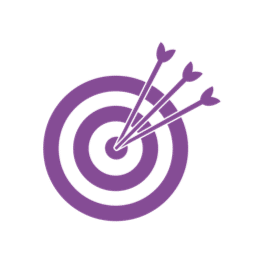Content consumers, regardless of their form, be they a shopper, a reader, a creative, (the list goes on), are increasingly trepidatious about the content they choose to trust. With an ever-increasing slew of web content from a range of sources from the known to the dubious, content consumers are sometimes left questioning the trustworthiness of what they’re finding. This same wary content consumption is carrying over to the professional sphere as well, with employees losing valuable time discerning if the information they’re looking at is the most relevant to what they’re trying to do or if that information is the most current version of itself. This blog will examine where these wary content consumption problems begin (what I refer to as “the inconsistency problem”) and provide an overview of content design for engendering trust.
The Risk of Inconsistent Information and Content
When information’s presentation, delivery, design, and voice is inconsistent and erroneous, the validity and authority of that information erodes, leaving it up to the user to determine what is or isn’t true. Sussing out the truth of your organization’s content can often result in games of email or phone tag, and lots of asking around. And if the answer fails to make itself apparent sooner rather than later, the initial task at-hand is not only at risk of being delayed, but completed according to incorrect protocols and in need of a do-over, ultimately delaying the successful completion of the user’s goal.
The Inconsistency Problem: Avoidable Inconsistencies vs. Necessary Changes
Avoidable Inconsistencies
Trust in content begins to erode when its presentation becomes inconsistent. We most often see this inconsistency online, where different sources of content present different spins on the same information and the end user is forced to pick that which they believe to be the most correct “version.” The risk still exists that the consumer can walk away with the incomplete story or an incorrect set of facts. The same applies to the realm of professional information and content: when content items are labeled incorrectly, or created without consideration for consistent voice, design, or presentation, the user must put in extra work to terse out what is the most ‘true.’ Oftentimes, inconsistencies in ‘storytelling,’ or information presentation, can be avoided when adequate and robust content governance policies are regularly practiced.
Necessary Changes
However, there are other times when inconsistency is inevitable (e.g., the change is necessary). Imagine that the employee handbook was moved to a different location on the intranet without notice. All of a sudden, employees can no longer access the handbook from its previous location and, if left unaddressed, this change spawns concern and distrust between information owners (e.g. HR) and information consumers (e.g. employees). It’s easy to imagine what type of questions can quickly abound from this small change, such as “Are they updating the handbook,” all the way to “Am I losing PTO,” or “Is the remote work policy changing,” and so on.
When inconsistency in the delivery and design of content can’t be avoided, we’ve found the best means of mitigating consumer distrust is with early, clear, and explanatory information. Instead of moving the employee handbook’s location without notice, maybe an HR representative would instead send out an email to the company to notify them that, yes, the employee handbook has been moved, identifies its new location, explains the reasons for the move, and invites questions or concerns. This notice allows all content consumers to modify their truth without questions or trepidation, as well as avoid losing time searching for content they can’t find.
Truth in the Professional Realm
Consistency enforces the truth value of information. Statements like:
- The Employee Handbook is located under ‘Employee Resources’ on the company intranet;
- To adjust your state tax withholding amount, speak to HR; and
- Blogs by Enterprise Knowledge employees are posted on the website’s ‘Knowledge Base;’
are truths because following these statements consistently guarantees user success. It’s the same reason that folder structures are a preferred means of personalized information architecture because the information architecture is not only designed to meet the needs of its creator, but the user’s path to information results in consistent goal achievement (e.g., locating a specific document or picture).
How to Design Trustworthy Content

If you’re in the position to avoid introducing inconsistency all together, rejoice! You have the opportunity to design content that’s trustworthy from the start of its introduction to your consumer. When making content design choices, there’s a single maxim to remember to guide you through the process: Familiarity and Consistency > Novelty. At EK, one of the ways we help our clients practice consistent content messaging is through the implementation of consistent content design. Content design can include the implementation of a content type, a template, descriptive metadata, writing standards, style guides, or any combination of those. These considerations allow all types of content to appear the same and standardize the users’ interactions with that content. As the consistency of that content design continues to be upheld, your users will know what they’re going to consume before they even begin interacting with it.
Conclusion
In summary, look for opportunities to implement consistency, regardless of where you are in the content creation and design process. You can begin with standardizing styles across a single content type, like templatizing your newsletters. Consider the voice of your content – are your content creators writing or speaking with a ‘one-ness’ across each iteration of that content? And remember, if inconsistencies in your content delivery can’t be avoided, communicate changes and their reasons early and clearly to avoid user wariness. At the end of the day, don’t abandon your content consumer and remember that you always have the opportunity to design things better.
Does your organization need assistance in developing or managing its content? Feel free to reach out to us for help!
